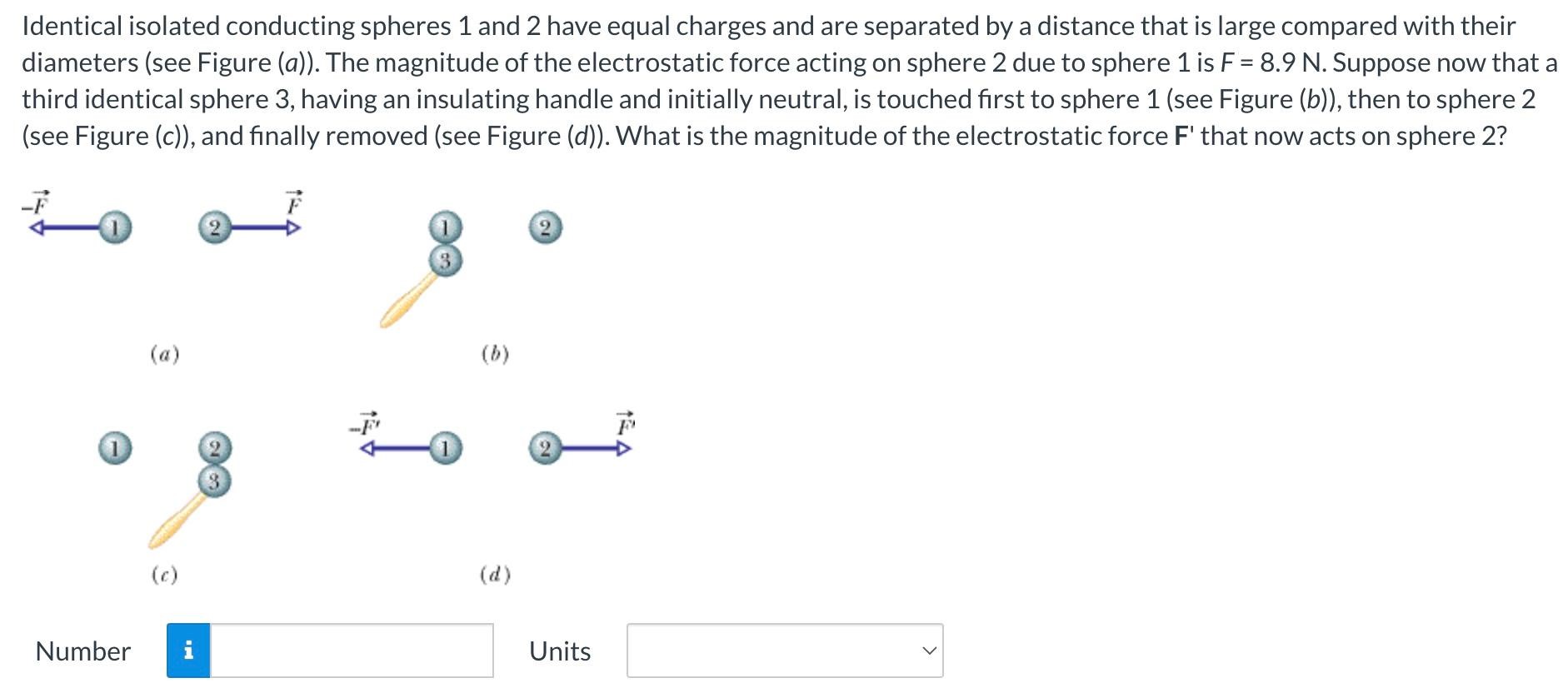Identical isolated conducting spheres 1 and 2 have equal charges and are separated by a distance that is large compared with their diameters (see Figure (a)). The magnitude of the electrostatic force acting on sphere 2 due to sphere 1 is F = 8.9 N. Suppose now that a third identical sphere 3, having an insulating handle and initially neutral, is touched first to sphere 1 (see Figure (b)), then to sphere 2 (see Figure (c)), and finally removed (see Figure (d)). What is the magnitude of the electrostatic force F′ that now acts on sphere 2? Number Units
